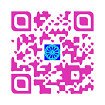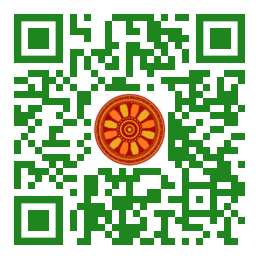
:: International Transaction Journal of Engineering, Management, & Applied Sciences & Technologies
http://TuEngr.com

ISSN 2228-9860
eISSN 1906-9642
CODEN: ITJEA8
FEATURE PEER-REVIEWED ARTICLE
Vol.12(10) (2021) |
Impacts of Remote Working on Employees During the COVID-19 Pandemic
 Omar A. Baakeel (Department of Human Resources Management, College of Business at Alkamil, University of Jeddah, Jeddah, SAUDI ARABIA).
Omar A. Baakeel (Department of Human Resources Management, College of Business at Alkamil, University of Jeddah, Jeddah, SAUDI ARABIA).
Disciplinary: Management Science (HRM).
doi: 10.14456/ITJEMAST.2021.196
Keywords: Job effectiveness; Employee engagement; Employee productivity; COVID-19 teleworking; Work from home (WHM); Employee working at home; Online communication; Remote Working (RW).
AbstractThis study investigates the impacts and influences of remote working on employees during the coronavirus pandemic, in terms of communication, job effectiveness, and employee engagement and productivity. Data were collected from participants from different sectors and industries in three regions in Saudi Arabia. The study’s findings revealed that remote working significantly impacted communication, job effectiveness, and employee productivity. However, the impacts of remote working on employee engagement were insignificant which could be a result of neglecting activities that encourage employee engagement by the organization because of the nature of working remotely. This research presents two contributions. First, this article enhances the literature on remote working and employees during crises or pandemics. Second, it reveals that remote working could be applied to run daily operations when implementing the appropriate strategies and infrastructure.Paper ID: 12A10G
Cite this article:
Baakeel, O. A. (2021). Impacts of Remote Working on Employees During the COVID-19 Pandemic. International Transaction Journal of Engineering, Management, & Applied Sciences & Technologies, 12(10), 12A10G, 1-14. http://doi.org/10.14456/ITJEMAST.2021.196
References
- Adams K and Galanes G. (2009). Communicating in groups: Application and skills. 6th Ed., McGraw Hill, New York.
- Allen TD, Golden TD and Shockley KM. (2015). How effective is telecommuting? assessing the status of our scientific findings. Psychological Science in the Public Interest, 16(2), 40-68.
- Anand A. (2020). Coronavirus outbreak: 4 tips for better employee engagement during lockdown. India Today. https://www.indiatoday.in/education-today/featurephilia/story/coronavirus-outbreak-4-tips-for-better-employee-engagement-during-lockdown-1670844-2020-04-25 (Accssed January 2021)
- Anderson D and Kelliher C. (2020). Enforced remote working and the work-life interface during lockdown. Gender in Management, 35, 677-683.
- Bailey DE and Kurland NB. (2002). A review of telework research: findings, new directions, and lessons for the study of modern work. Journal of Organizational Behavior, 23(4), 383-400.
- Bao L, Li T, Xia X, Zhu K, Li H and Yang X. (2020). How does working from home affect developer productivity? A case study of Baidu during the COVID-19 Pandemic. Science China, 2, 1-17.
- Baruch Y. (2002). Teleworking: Benefits and pitfalls as perceived by professionals and managers. New Technology Work and Employment, 15(1), 34-49.
- Bates S. (2004). Getting engaged. HR Magazine, 49(2), 44-51.
- Begley KA. (2004). Face-to-face communication: making human connection in a technology-driven world. Thompson Place, Boston.
- Brinkerhoff RO and Dressler DE. (1990). Productivity measurement: a guide for managers and evaluators. Sage Publications, New York.
- Brochner J. (2017). Measuring the productivity of facilities management. Journal of Facilities Management, 15(3), 285-301.
- Butler ES, Aasheim C and Williams S. (2007). Does Telecommuting Improve Productivity? Communications of the ACM, 50(4), 101-103.
- Cascio WF and Aguinis H . (2008). Staffing twenty-first-century organizations. The Academy of Management Annal. 2(1), 133-165.
- Cohen J. (1988). Statistical Power Analysis for the Behavioral Sciences. Lawrence Erlbaum Associates.
- Deal JJ, Stawiski S and Gentry WA. (2010). Employee engagement: has it been a bull Market? Quick View Leadership Series. A Center for creative leadership report sponsored by Booz Allen Hamilton. http://www.ccl.org/leadership/pdf/research/EmployeeEngagement.pdf (Accessed January 2021)
- Di Martino V and Wirth L. (1990). Telework: a new way of working and living. International Labour Review, 129(5), 529-554.
- Ean LC. (2010). Face-to-face versus computer-mediated communication: exploring employees’ preference of effective employee communication channel. International journal for advancement of science and arts, 1(2), 38-45.
- Ellison NB. (2004). Telework and social change: how technology is reshaping the boundaries between home and work. Westport. Conn, Praeger.
- Eversole BAW, Venneberg D and Crowder C L. (2012). Creating a flexible organizational culture to attract and retain talented workers across generations. Advances in Developing Human Resources, 14(4), 607-625.
- Feldman DC and Gainey TW. (1997). Patterns of telecommuting and their consequences: framing the research agenda. Human Resources Management Review, 7(4), 369-388.
- Fitzer MM. (1997). Managing from after: performance and rewards in a telecommuting environment. Compensation and Benefits Review, 29, 65-73.
- Flores MF. (2019). Understanding the challenges of remote working and its impact to workers. International Journal of Business Marketing and Management, 4(11), 40-44.
- Fujii K. (2020). Workplace motivation addressing telework as a mechanism for maintaining employee productivity. University Honors Theses paper#891.
- Gajendran RS and Harrison DA. (2007). The good, the bad, and the unknown about telecommuting: meta-analysis of psychological mediators and individual consequences. Journal of Applied Psychology, 92, 1524-1541.
- Gajendran RS, Harrison DA and Delaney-Klinger K. (2014). Are telecommuters remotely good citizens? unpacking telecommuting’s effects on performance via I-deals and job resources. Personnel Psychology, 68(2), 353-393.
- Garrett RK and Danziger J. (2007). Which Telework? Defining and testing a taxonomy technology-mediated work at a distance. Social Science Computer Review, 25(1), 1-36.
- Grant C, Wallace LM and Spurgeon PC. (2013). An exploration of the psychological factors affecting remote e-worker’s job effectiveness, well-being, and work-life balance. Employee Relations, 5(35), 527-546.
- Grunig J. (Eds.). (1992). Excellence in public relations and communication management. Lawrence Erlbaum Associates, London.
- Hatch MJ. (2006). Organization Theory-modern, symbolic, and postmodern perspectives. New York, Oxford University Press.
- Hill EJ, Miller BC, Weiner SP and Colihan J. (1998). Influences of virtual office on aspects of work and work/life balance. Personnel Psychology, 51(3), 667-683.
- Hair JF, Black WC, Babin BJ, Anderson RE and Tatham RL. (2005). Multivariate Data Analysis. 6th Ed., Pearson Prentice-Hall, Englewood Cliffs, NJ.
- Hair JR, Hult TM., Ringle CM and Sarstedt, M. (2014). A primer on partial least squares structural equation modeling. (PLS-SEM). SAGE, Los Angeles, CA.
- Hair JF, Risher JJ, Sarstedt M and Ringle CM. (2019). When to use and how to report the results of PLS-SEM. European Business Review, 31(1), 2-24.
- Hair JR, Sarstedt M, Ringle CM and Gudergan SP. (2018). Advanced Issues in Partial Least Squares Structural Equation Modelling. Sage, Los Angeles, CA.
- Holtzhausen, D.. (2002). The effects of a divisionalised and decentralised organizational structure on a formal internal communication function in a South African organization. Journal of Communication Management, 6(4), 323-339.
- Hong J, Yang S, Wang L, Chiou E, Su F and Huang S. (1995). Impact of employee benefits on work motivation and productivity. International Journal of Career Management, 7(6), 10-14.
- Hunt on JE and Norman C. (2010). The impact of alternative telework arrangements on organizational commitment: Insights from a longitudinal field experiment. Journal of Information Systems 24, 67-90.
- Jex, SM.. (1998). Stress and job performance: theory, research, and implications for managerial practice. Sage Publications, London.
- Jonassen DH and Kwon HI. (2001). Communication patterns in computer-mediated versus face-to-face group problem solving. Educational Technology Research and Development, 49(10), 35-52.
- Kalla HK. (2005). Integrated internal communications: a multidisciplinary perspective. Corporate Communication: An International Journal, 10(4), 302-314.
- Kanter RM. (1979). Power failure in management circuits. Harvard Business Review, 57(4), 65-75.
- Garrett KR and Danziger JN. (2007). Which telework? defining and testing a taxonomy of technology-mediated work at a distance. Social Science Computer Review, 25, 27-47.
- Khalifa M and Davison RM. (2000). Exploring the telecommuting paradox. Communications of the ACM, 43(3), 29-31.
- Kossek EE and Lautsch BA. (2018). Work-life flexibility for whom? occupational status and work-life inequality in upper, middle, and lower-level job. Academy of Management Annals, 12(1), 5-36.
- Lockwood N. (2007). Leveraging employee engagement for competitive advantage: HR’s strategic role. HR Magazine, 52(3), 1-11.
- Macey WH and Schneider B. (2006). Employee experiences and customer satisfaction: toward a framework for survey design with a focus on service climate. In Kraut, A. I. (Ed.). Getting action from organizational surveys. San Francisco: Jossey-Bass, 53-75.
- Madsen SR. (2011). The benefits, challenges, and implications of teleworking: a literature review. Culture & Religion Review Journal, 1, 148-158.
- Mann S and Holdsworth L. (2003). The psychological impact of teleworking: stress, emotions, and health. New Technology, Work and Employment, 18(3), 196-211.
- Miller K. (2009). Organizational communication: approaches and process. 5th Ed., Wadsworth, United States of America.
- Mone EM and London M. (2018). Employee engagement through effective performance management: a practical guide for managers. Routledge, New York.
- Nield D. (2016). People who work remotely are happier and more productive study finds. https://www.sciencealert.com/working-remotely-makes-you-happier-and-more-productive (Accessed January 2021).
- Nilles JM. (1994). Making telecommuting happen: a guide for telemanagers and telecommuters. Van Nostrand Reinhold, New York.
- Oloke OC, Oni AS, Babalola DO and Ojelabi RA. (2017). Incentive package, employee’s productivity and performance of real estate firms in Nigeria. European Scientific Journal, 13(11), 246-260.
- Olsan MH. (1983). Remote office work: changing work patterns in space and time. Communication of ACM, 26(3), 182-187.
- Parris J. (2017). Remote work or telecommute: what’s the difference. Http://Workflexibility.Org (Accessed January 2021).
- Rahmawati D. (2013). The effect of motivation on the work productivity of employees of Pr Fajar Berlian Tulungagung. Journal of Tulungagung Bonorowo University, 1(1), 1-16.
- Ringle C, Da Silva D and Bido D. (2014). Structural equation modeling with the SmartPLS. Brazilian Journal of Marketing, 13(2), 56-73.
- Sauermann J. (2016). Performance measures and worker productivity: choosing the right performance measures can inform and improve decision-making in policy and management. IZA World of Labor 260, 323-339.
- Sias PM, Pedersen H, Gallagher EB and Kopaneva I. (2012). Workplace friendship in the electronically connected organization. Human Communication Research, 38(3), 253-279.
- Stable DS. (2001). A study of remote workers and their differences from non-remote workers. Journal of Organizational and End User Computing, 13(2), 3-14.
- Talukdar AD. (2020). 5 tips for practicing employee engagement amidst the covid-19 pandemic. Business 2 Community. Https://Www.Business2community.Com/Human-Resources/5-Tips-For-Practicing-Employee-Engagement-Amidst-The-Covid-19-Pandemic-02300396 . (Accessed January 2021).
- Taskin L and Bridoux F. (2010). Telework: a challenge to knowledge transfer in organizations. The International Journal of Human Resource Management, 21(13), 2503-2520.
- Vance RJ. (2006). Employee engagement and commitment: a guide to understanding, measuring, and increasing engagement in your organization. SHRM Foundation, Virginia.
- Van der Meulen D. (2017). Does working really work? RSM Discovery-Management Knowledge, 29(1), 20-22.
- Vickers M. (2019). Boosting worker engagement in tough times. American Management Association. https://www.amanet.org/articles/boosting-worker-engagement-in-tough-times/ (Accessed January 2021).
- Whyte A. (2015). Firms recognize engagement. Talent Management Magazine. https://www.chieflearningofficer.com/2015/05/15/firms-recognize-engagement__trashed/ (Accessed January 2021)
Other issues:
Vol.12(10)(2021)
Vol.12(9)(2021)
Vol.12(8)(2021)
Archives
Call-for-Papers
Call-for-Scientific PapersCall-for-Research Papers: ITJEMAST invites you to submit high quality papers for full peer-review and possible publication in areas pertaining engineering, science, management and technology, especially interdisciplinary/cross-disciplinary/multidisciplinary subjects.
To publish your work in the next available issue, your manuscripts together with copyright transfer document signed by all authors can be submitted via email to Editor @ TuEngr.com (no space between). (please see all detail from Instructions for Authors)
Publication and peer-reviewed process:
After the peer-review process (4-10 weeks), articles will be on-line published in the available next issue. However, the International Transaction Journal of Engineering, Management, & Applied Sciences & Technologies cannot guarantee the exact publication time as the process may take longer time, subject to peer-review approval and adjustment of the submitted articles.